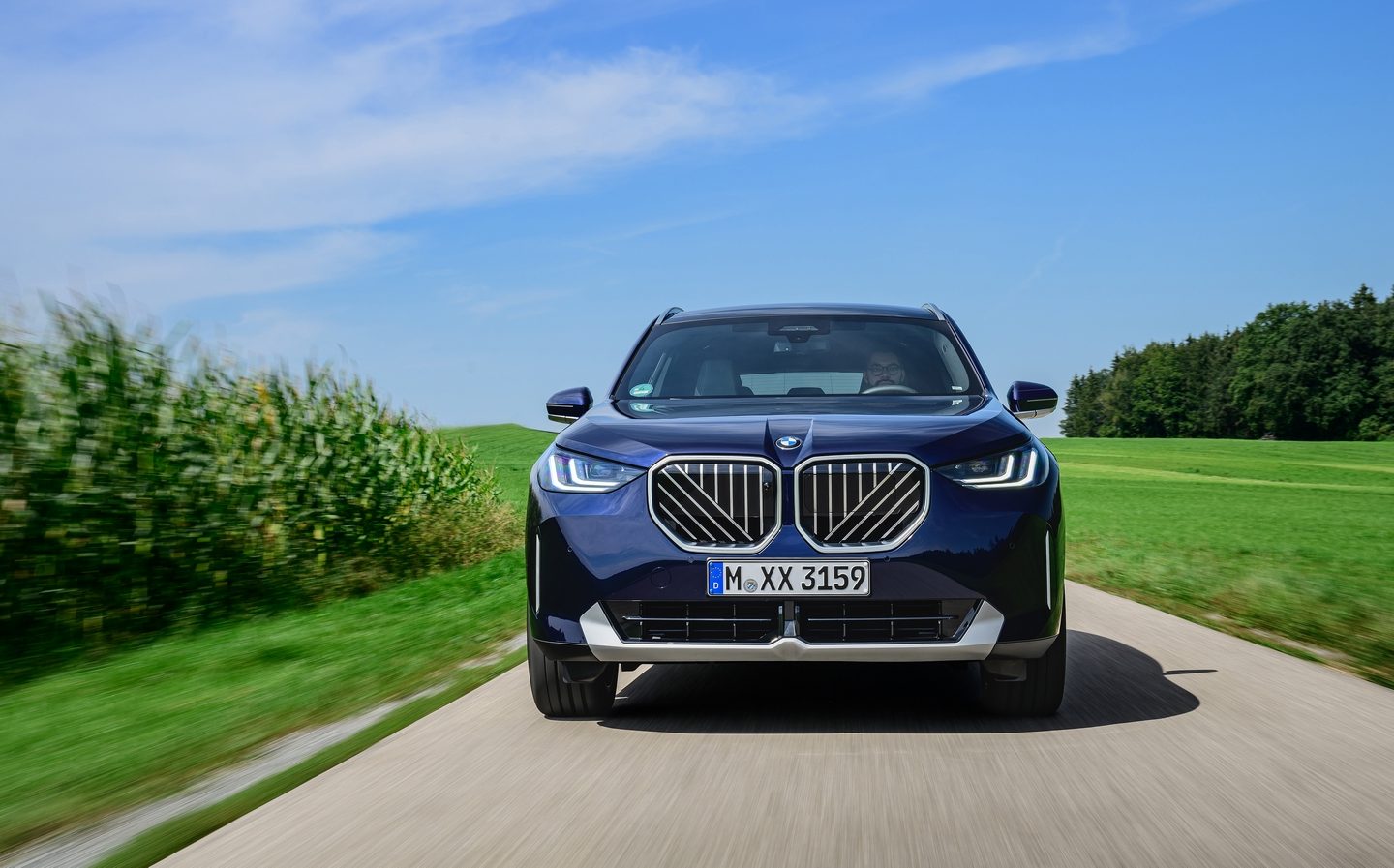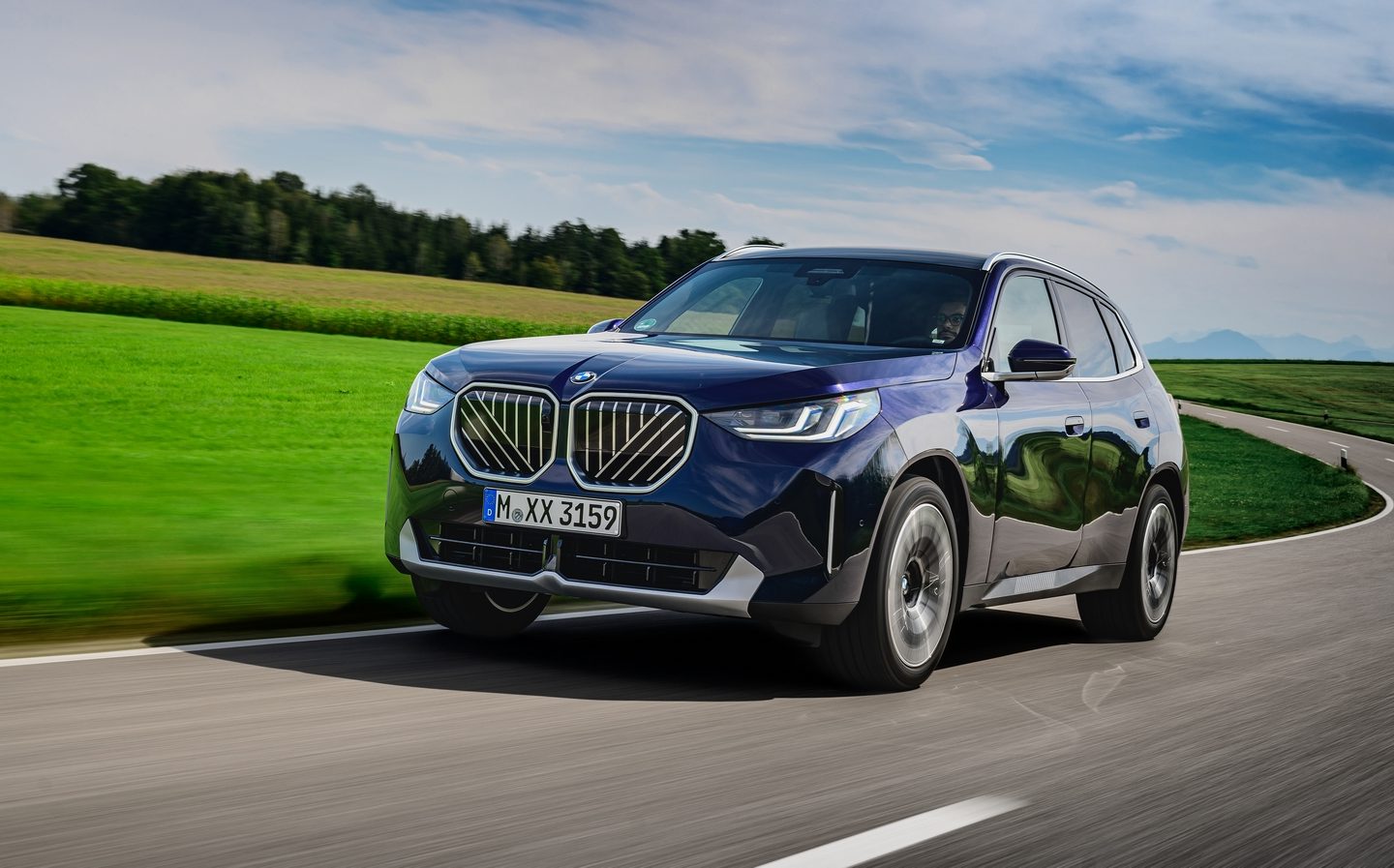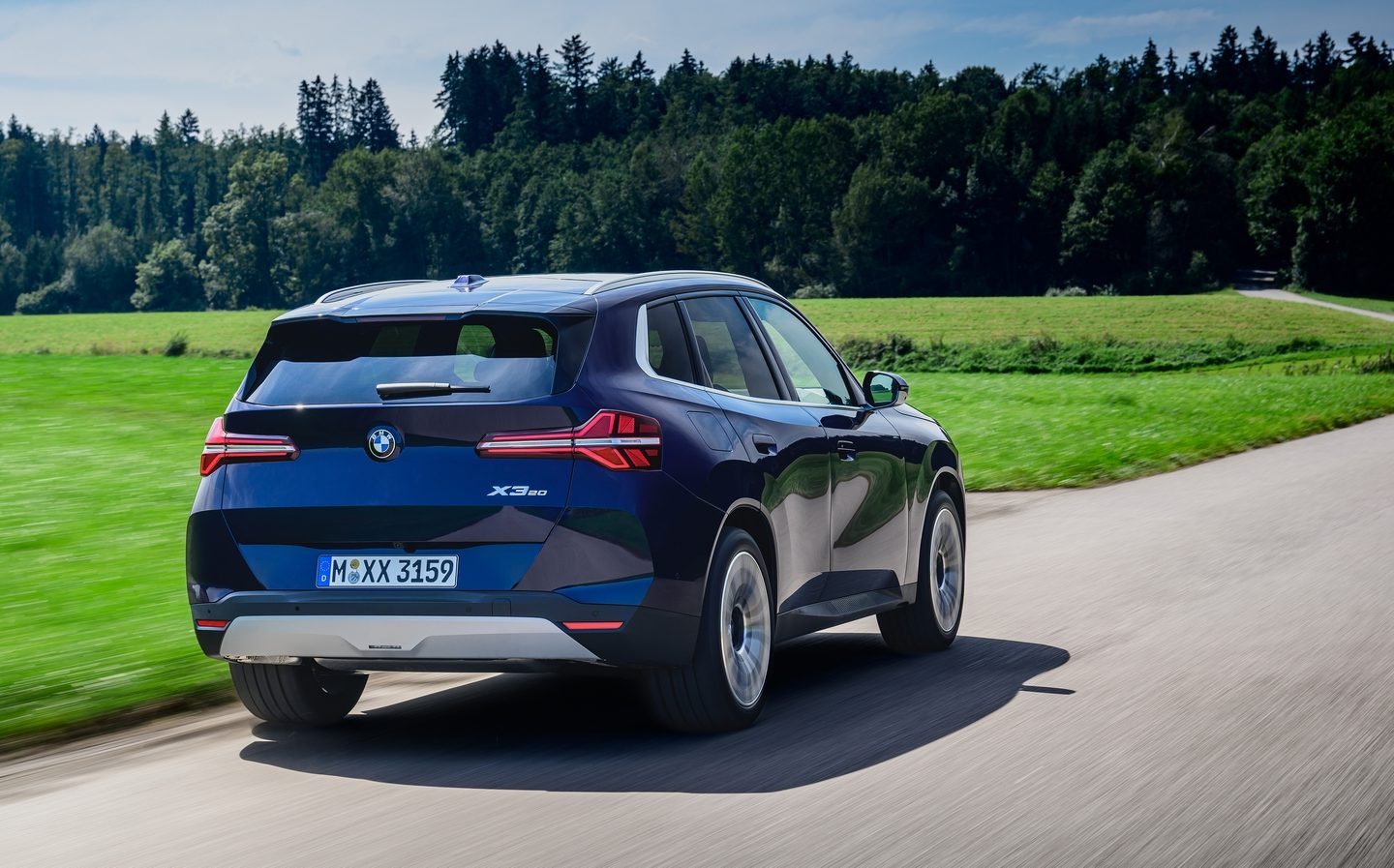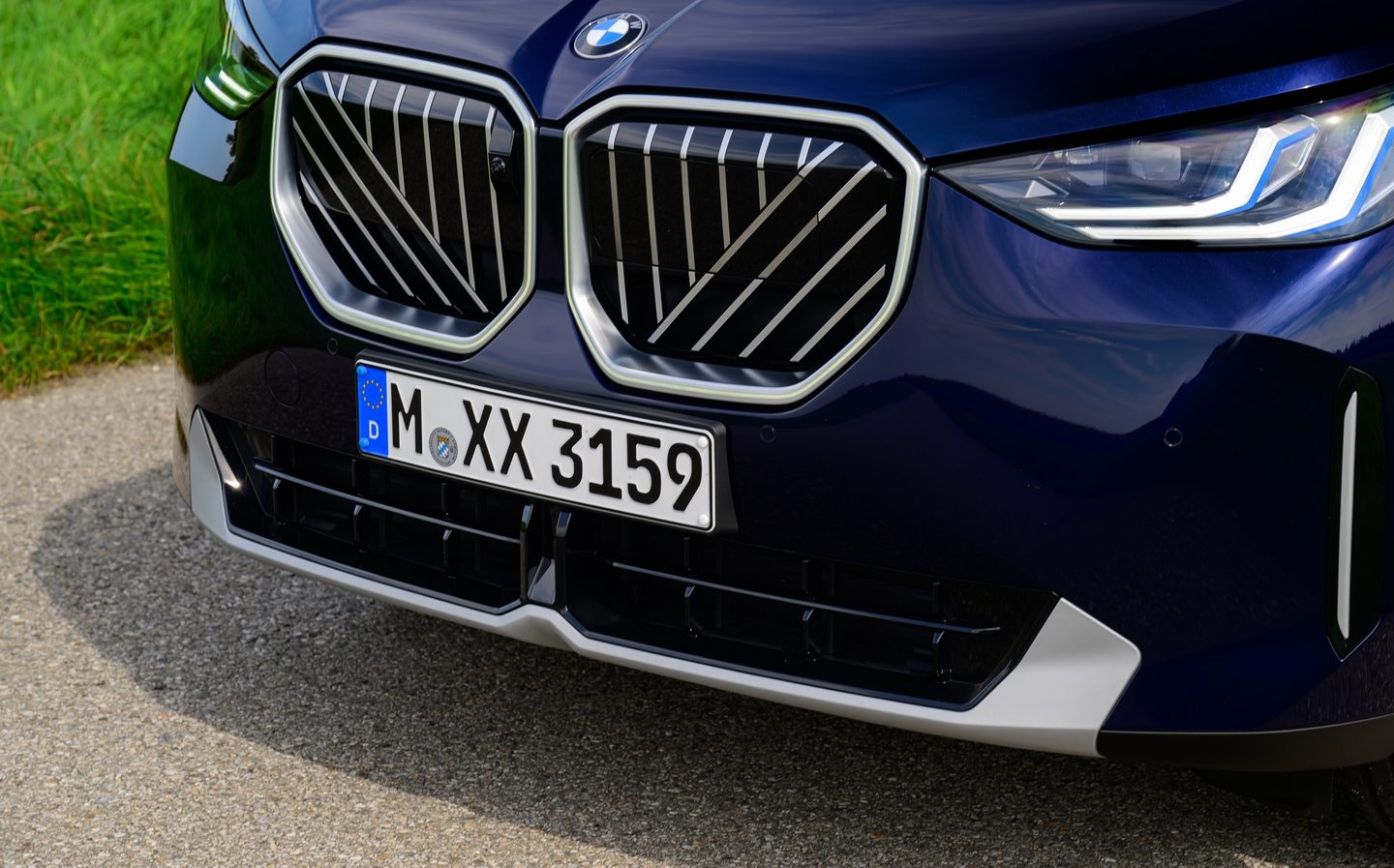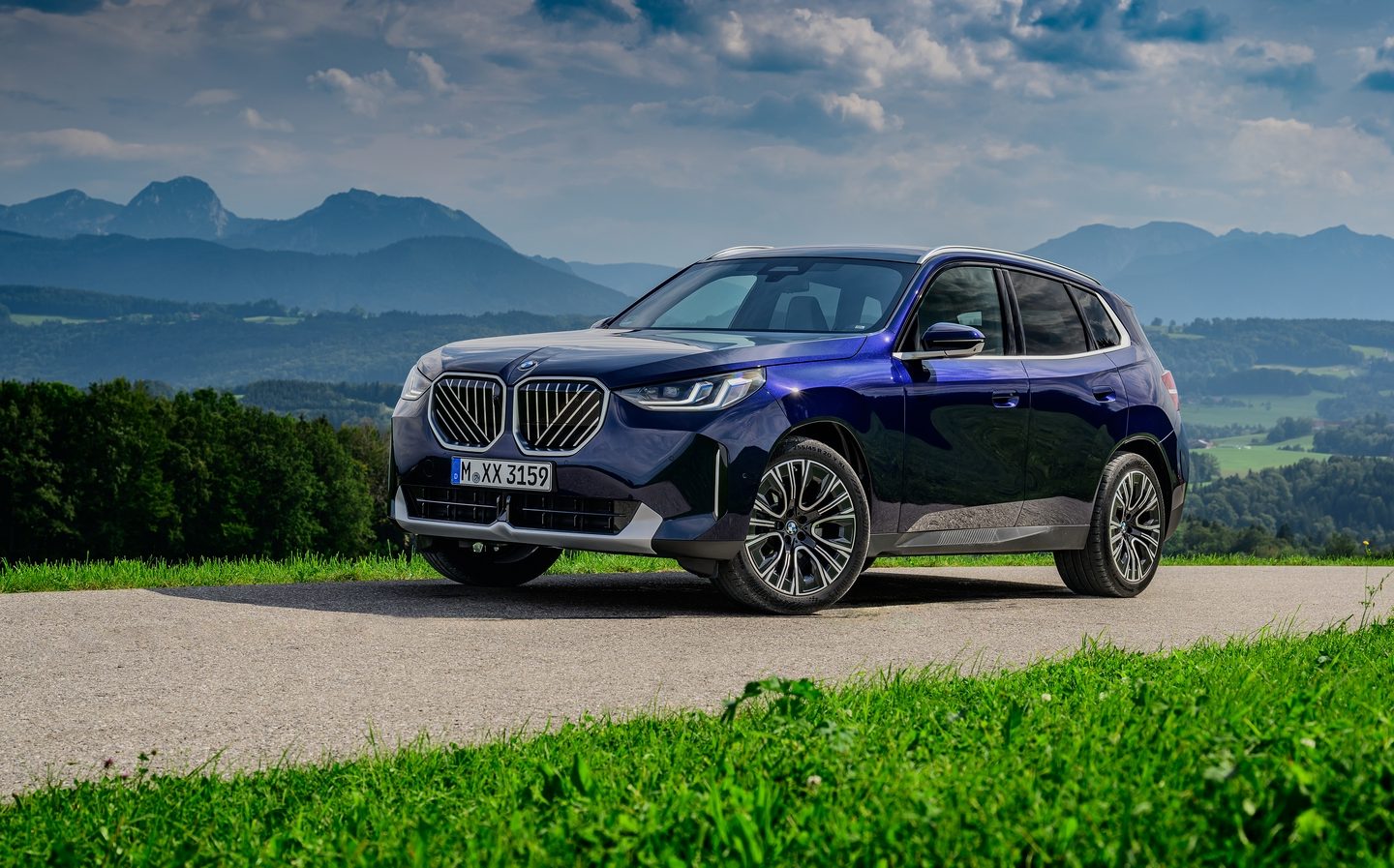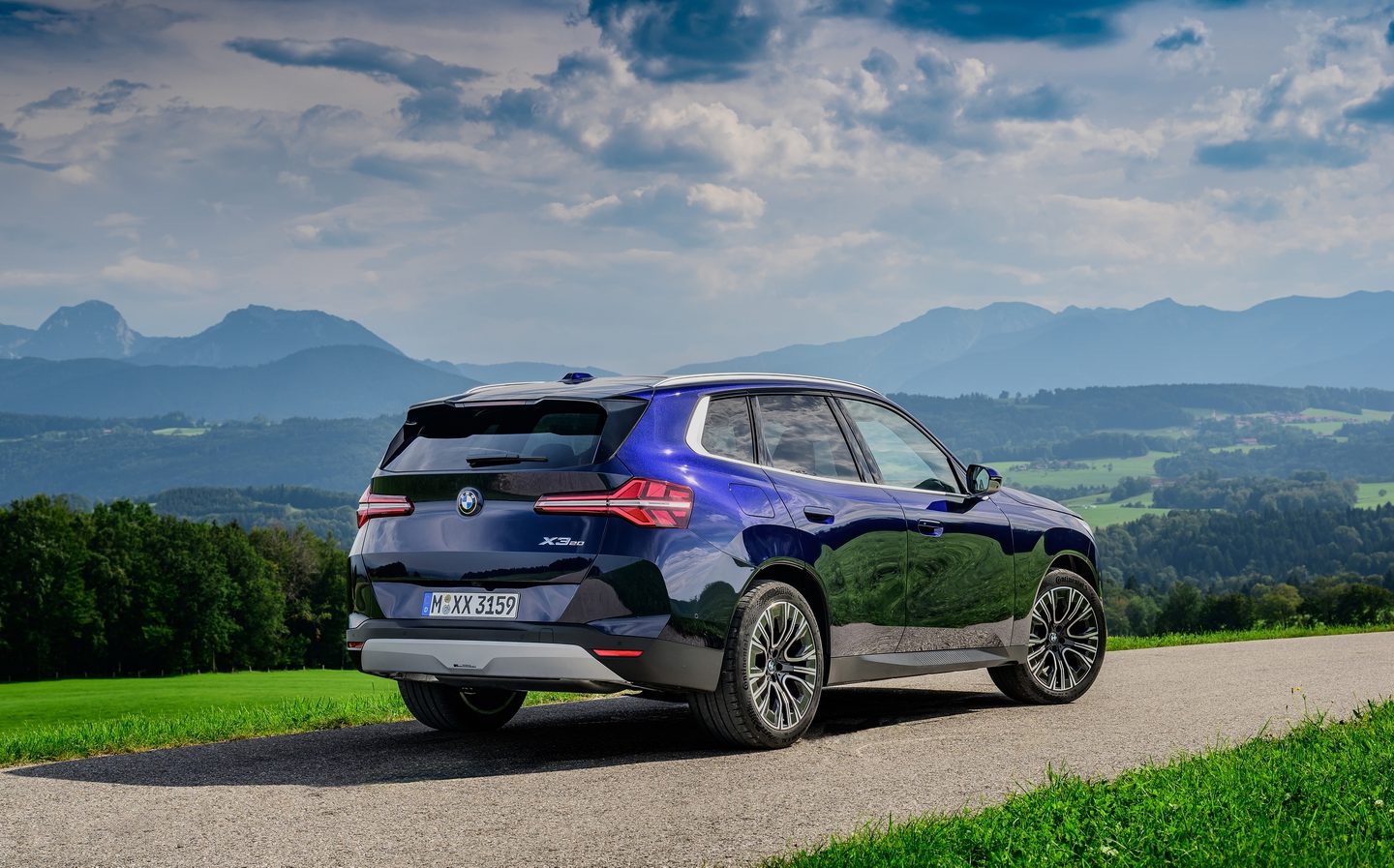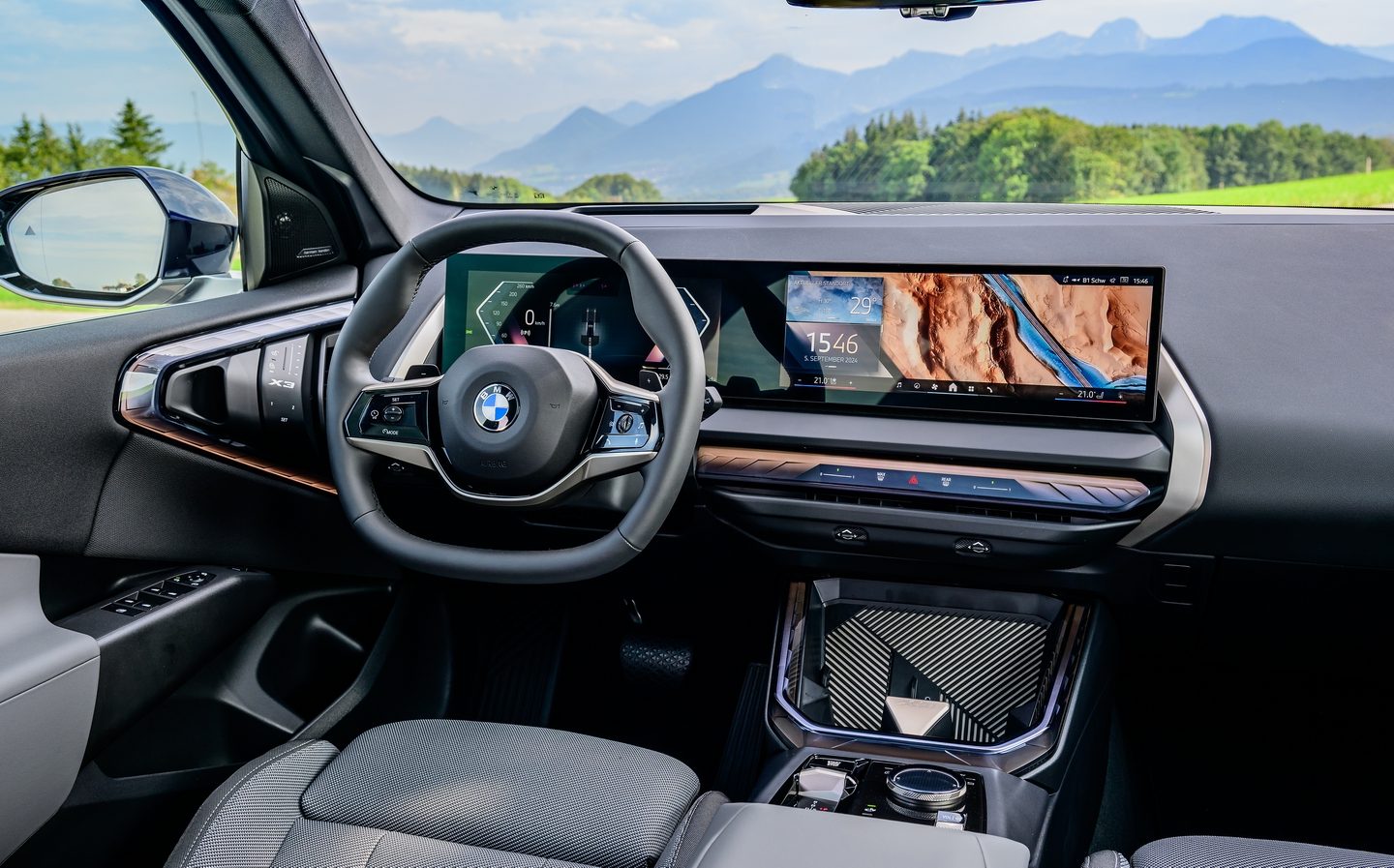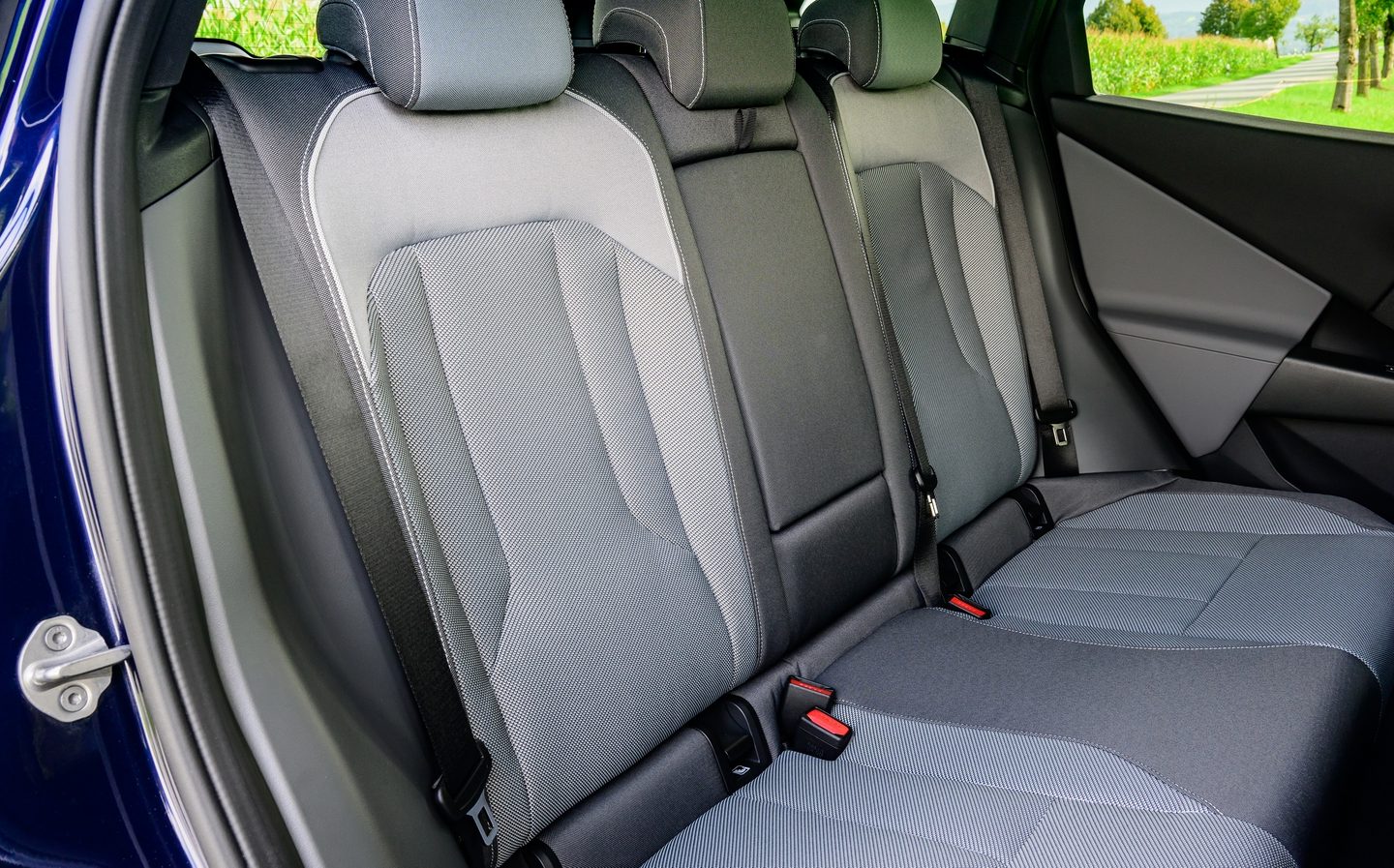BMW X3 2024 review: Brilliant engineering ... just don't look closely at the interior
Not an ex-3, but a step backwards
The whole point of premium cars is that they feel upmarket; as though you’ve paid, well, a premium. And for years, BMW has been rather good at making its cars feel well engineered and well made. The outgoing BMW X3, for example, felt like it was built properly by people who knew what they were doing and weren’t cutting corners. Unfortunately, the German carmaker seems to have dropped the ball a bit of late, because the current 5 and 7 Series models feel cheap in places, and the new X3 just feels cheap full stop.
It isn’t that it’s a badly engineered car — not a bit of it — but the materials used in the interior are below par to say the least, and BMW knows it. In a refreshing wave of honesty, some executives quietly admitted to Driving.co.uk that the quality isn’t what they might have wished for, thanks almost entirely to the firm’s bean-counters.
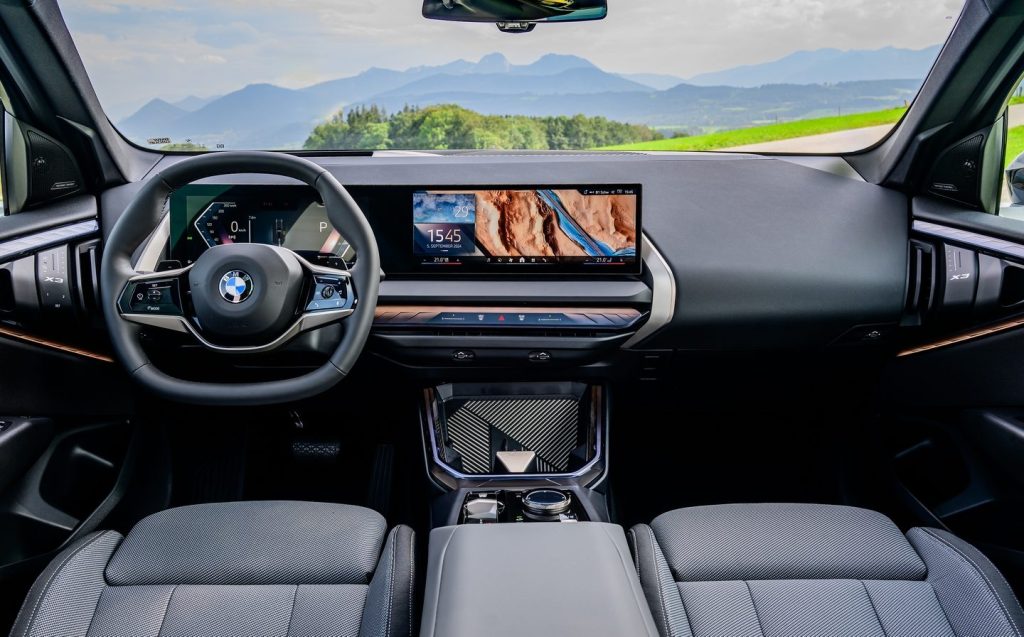
It’s a shame because the BMW X3 has long been a very capable premium SUV. The old car was luxurious, spacious and pleasant to drive, and though high-performance versions were less than comfortable, the mainstream models were brilliant. In fact, they were some of the best upmarket 4x4s you could buy, thanks in no small part to the engaging handling and the beguiling 3-litre engine options. Five years ago, we’d have had no hesitation in recommending one to a friend. In fact, I did exactly that, and the friend in question absolutely loved it.
On the face of it, the new X3 ought to be just as commendable. Yes, BMW has updated the styling to fit with the latest models in its range, and whether or not you like the new design language is a question of taste, but at least the grille hasn’t been made to compete in scale with a whale shark’s mouth.
The company has made sensible choices with engines, too, continuing to offer 2-litre and 3-litre petrol and diesel options, some of which now feature mild-hybrid tech for better economy, and there’s a plug-in hybrid for company car drivers.
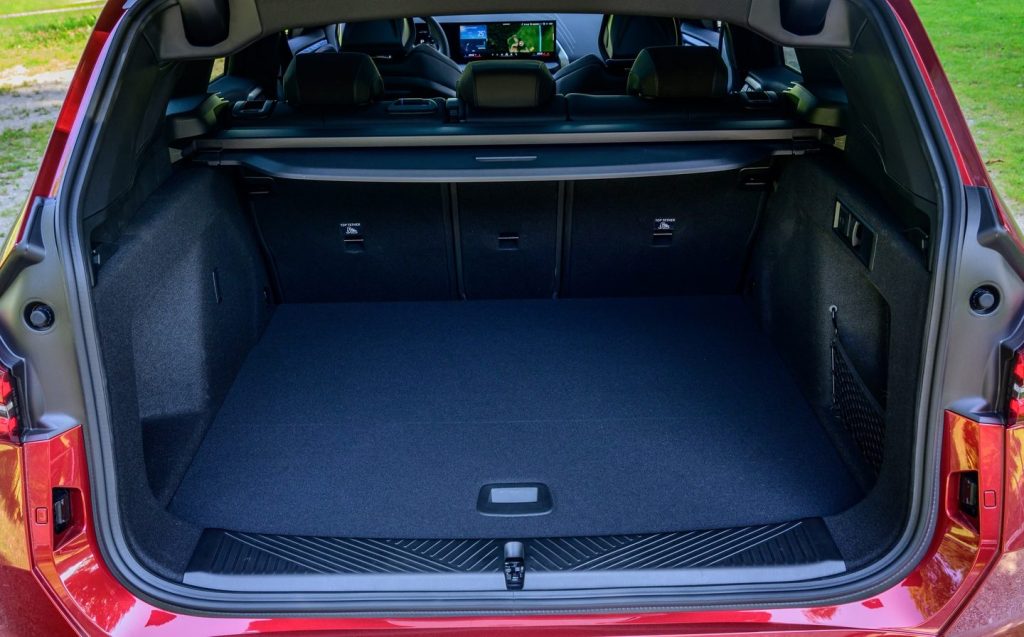
So far, so appealing, and things only get better when you look at the details. BMW has made the boot bigger, for example, stretching the capacity to 570 litres with the rear seats upright, and though that doesn’t turn the car into a class leader, it does make it more competitive — somewhere between the Audi Q5 and Mercedes GLC.
There’s plenty of rear cabin space, too, and though there’s no seven-seat option, as you get with a Land Rover Discovery Sport, it will carry four adults in comfort. Use of BMW’s latest technology should help, as well, and BMW has even decided to offer a fully “vegan” interior to those of an environmentally conscious disposition.
Sounds good, doesn’t it? But then you slip into the driving seat, and it all goes sideways very quickly. Getting in is fine, and the sportily sculpted seats are perfectly pleasant, even with the sustainable fabric that feels a bit rough but is otherwise comfortable. You’re greeted by a cleanly designed and minimalist new dashboard that’s topped with a massive screen housing, and there’s lots of ambient lighting all over the place. And then you close the door…
At that point, things start to unravel, because the handle built into the arm rest feels terribly cheap. The sort of cheapness we kind of accepted in the Volkswagen Up! a decade ago, but certainly won’t tolerate in a premium SUV today. And once your hand has recoiled from the tackiness in the manner of a 21st Century Jack Sparrow picking up dog dirt, you realise most of the door card feels equally low-rent. The arm rest itself is fine, but the plastic on the top of the door is no better than acceptable, and the door catch is dire. It’s thin and lightweight, the texture is naff and the whole thing feels like it’s made from old wheelie bins. It even makes the same noise as a wheelie bin lid closing when you let it spring back into place.
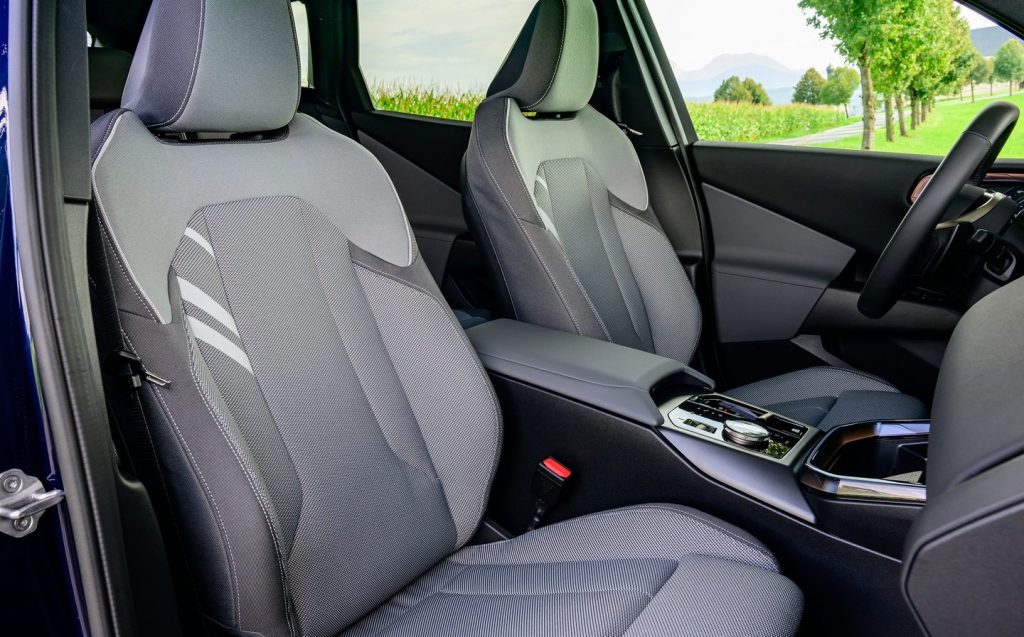
Were that the end of the X3’s interior woes, we might let it off and view the whole thing as an oversight that will be fixed at the next update, but the problems run deeper than that. There’s a strange multi-function switch panel next to the door catch that feels just as cheap and insecure, while the plastic panel on the lower part of the dashboard is tacky and unpleasant. So too are the shift paddles behind the steering wheel and the air vent controls, which feel lightweight and fiddly. Oh, and the glovebox is crummy, too.
On a more positive note, the big “Curved Display” looks great, and BMW has made the dashboard simpler than before, primarily by removing all the buttons. Switchgear is kept to a minimum all over the dash, but that means most of the pressure lies on the shoulders of the touchscreen.
Thankfully, it’s up to the task. The screen resolution is good, the processor responds quickly and the menus are fairly logical, but it has an awful lot to do. Everything from heating and ventilation to driving modes and vehicle settings is controlled via the screen, and that makes processes that should be simple quite distracting.
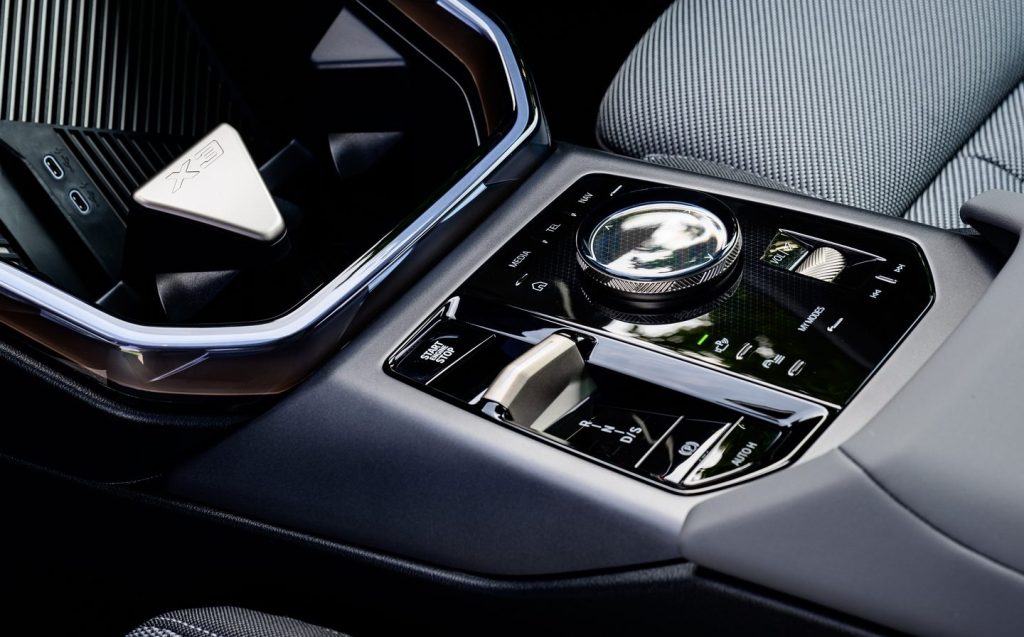
Sensibly, BMW also retains the iDrive control wheel on the centre console, which allows you to navigate more easily when you’ve learned your way around the system, and you have steering wheel controls to help out with multimedia and volume. Notably, the buttons on the front of the wheel are better made than the paddles on the back.
The other triumph is the digital instrument display, which follows the touchscreen’s lead in terms of screen resolution and adds plenty of configuration options. Combine that with the optional head-up display, which changes depending on which mode you’re in, and the X3 has a comprehensive suite of interior tech.
And the driving seat is definitely the one to occupy in the X3, not least because the act of driving takes your mind off the door handles and air vents. But also because the X3 is a nice car to drive.
The steering doesn’t quite have the feel of BMW’s smaller models, but it’s still predictable and linear, so placing the car exactly where you want it through sweeping turns is easy. There’s plenty of grip, too, and body roll is well controlled even in the supposedly lowlier xLine model, such as the one we tested. While a Porsche Macan or a Jaguar F-Pace will be a little more fun in the corners, the X3 is still good enough to be mentioned in the same breath.
It’s good everywhere else, too, with a ride that’s supple and composed without being silky (although the go-faster M50 xDrive model’s suspension is a bit too firm for our taste). Visibility is decent, too. This will never be the ideal car for worming its way through a busy city, but as a motorway cruiser, it’s very capable.
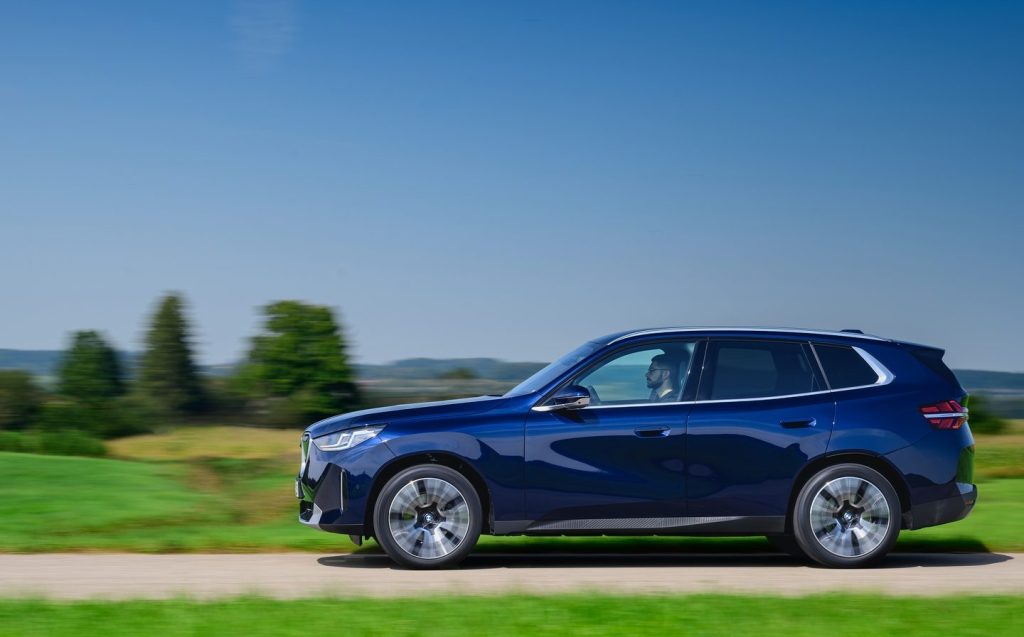
But the highlight is really the engine range, with which BMW continues to impress. Things kick off with a choice of 2-litre petrol engines, which wear the 20 xDrive and 20d xDrive badges — the “d” denoting the diesel option. Both come with around 200bhp, which is adequate for a car of this size, and represent decent value for money.
Above that, there’s the 30e xDrive plug-in hybrid and the M50 xDrive performance model, which uses a 3-litre straight-six cylinder petrol engine to produce the best part of 400bhp. Which is, obviously, quite a bit of oomph, and it wasn’t so long ago that that was BMW M5 levels of gusto.
A 3-litre, six-cylinder diesel is on the way next year, too, and if previous BMW six-pot diesels are anything to go by it’s set to be the highlight of the range — silky smooth, efficient (especially on motorways) and punchy. Like every other engine in the X3 lineup, it’ll come with all-wheel drive and an eight-speed automatic gearbox (there are no manual options here).
We tested the 2-litre petrol engine, which represents the entry point in the X3 range, and took a quick spin in the range-topping M50 xDrive, essentially bookending the line-up. While the 20 xDrive petrol option is unlikely to be especially popular, largely thanks to the diesel’s superior economy, it is a very competent and relatively refined powertrain, and it integrates its fuel-saving mild-hybrid technology well.
The M50, meanwhile, has a sensational engine in terms of performance, refinement and smoothness, but the fuel bills will undoubtedly put off many customers.
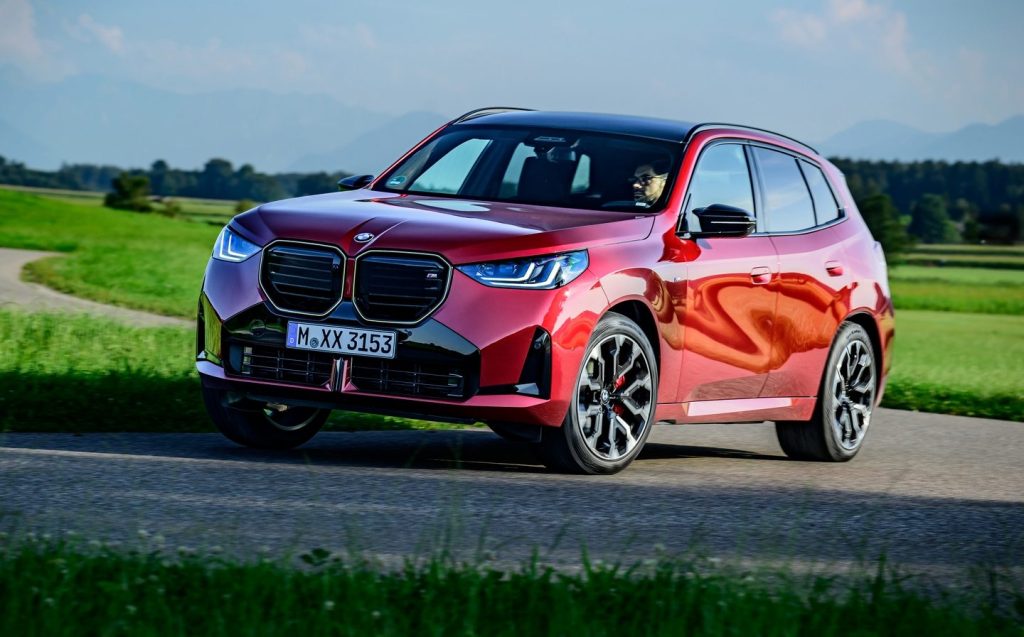
The X3 is expensive, too, with prices starting at just under £67,000 — a Merc GLC 220 d 4Matic costs £52, 895. When BMW introduces the 2-litre engines they will offer even better value, bringing the price tag below £50,000.
But those thinking of going all out for the M50 should note that while it comes with bespoke (i.e. less comfortable) suspension, bags of power and lots of sporty accoutrements, the entry-level X3 actually represents far better value. Marked out by its silver-effect skid plates and exterior trim, the X3 xLine comes with electrically adjustable sports seats, a reversing camera and automatic climate control, as well as wireless phone charging, keyless entry and an automatic tailgate. You get 19in alloy wheels, too, and even in plug-in hybrid form, it’s almost £10,000 cheaper than the M50.
So, it’s a shame, really, that the X3’s interior is such a disappointment, because the rest of the car is incredibly well sorted. It drives nicely, it’s roomy enough and the engines are brilliant. There’s a lot to like. It’s just that all that was true of the old X3, and the new one, which was supposed to up the big SUV’s game, feels like a backwards step. It isn’t a bad car by any stretch of the imagination; it’s just not as good as it used to be.
Related articles
- If you found this review of the new BMW X3 interesting, you may want to read about the forthcoming M5 Saloon
- You might also like to read our review of the BMW M3 Touring
- Have you seen the next-generation BMW M2?
Latest articles
- F1 2025 calendar and race reports: The new Formula One season as it happens
- Seven great automotive events to visit this summer, from F1 to art and champagne
- Watch new Porsche 911 GT3 smash Nürburgring record for manual cars
- Skoda Elroq 2025 review: Czech carmaker can’t seem to miss with its electric family cars
- Five best electric cars to buy in 2025
- Should I buy a diesel car in 2025?
- Zeekr 7X AWD 2025 review: A fast, spacious and high tech premium SUV — but someone call the chassis chief
- Denza Z9GT 2025 review: Flawed but sleek 1,062bhp shooting brake from BYD’s luxury arm
- Extended test: 2024 Renault Scenic E-Tech review


